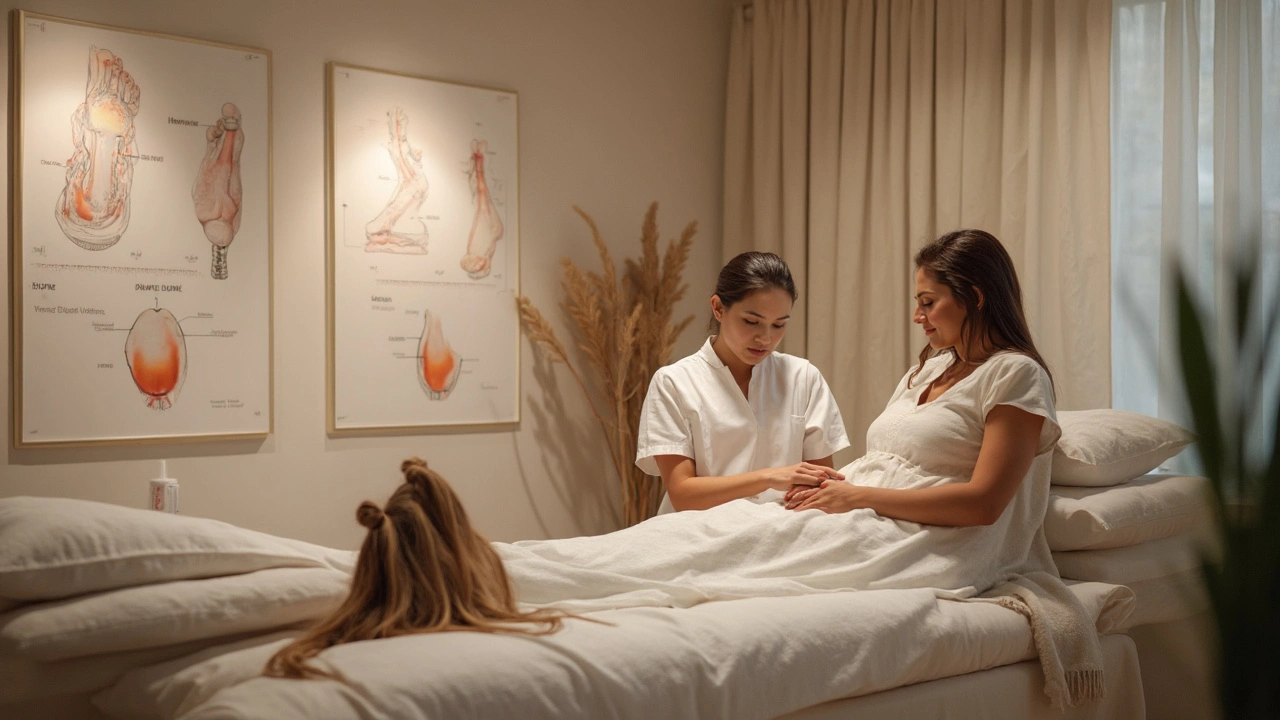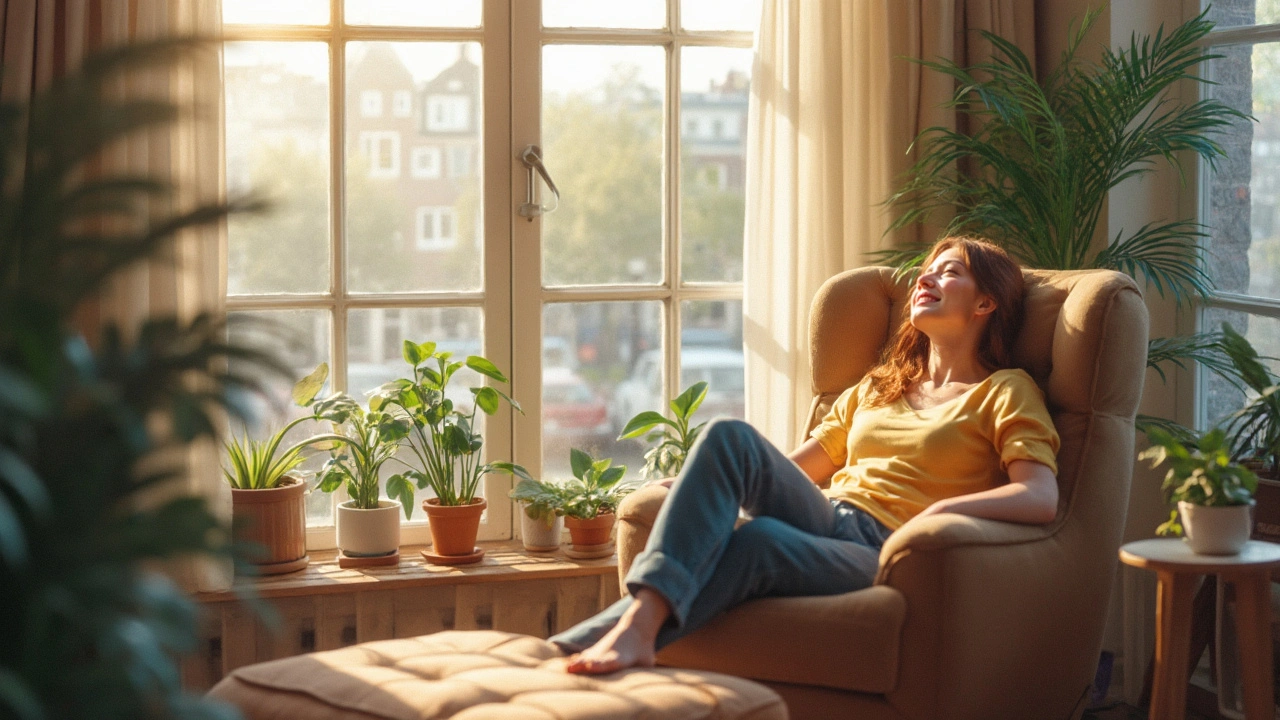Foot Massage for Immune System: How to Boost Your Body Naturally

Ever feel like your body's screaming for a break? Turns out, giving your feet some love with a good massage isn’t just about relaxing—it can actually give your immune system the boost it needs. With everything your body tackles daily, from germs to stress, your immune system works overtime. And here’s the twist: studies show that regular foot massage can help lower stress hormones, improve blood flow, and balance your body in ways that support your natural defenses.
You don’t need fancy equipment, a spa day, or a pro to get started. Your hands (or even a simple tennis ball) can work wonders. Certain points on your feet connect to key organs, kind of like command centers for your immune system. Spending just ten minutes working these spots can help you feel more energetic, clear-headed, and ready to fight off whatever’s going around. Plus, who doesn’t love an excuse to put their feet up?
- How Foot Massage Affects Your Immune System
- Simple Foot Massage Techniques to Try at Home
- Choosing the Right Foot Massage Service
- Safety and Best Practices for Foot Massage
How Foot Massage Affects Your Immune System
When you think of building up your immune system, you probably picture vitamins and sleep, not rubbing your feet. But here’s something cool—your feet are packed with nerve endings, and when you massage them, it actually sends signals to the rest of your body. Reflexology, a style of foot massage, works on the idea that certain points on your feet connect directly to organs and tissues that play a big part in immune health. It’s like calling in backup for your body’s defense system.
Massaging your feet can help ramp up blood flow. And when blood flows better, white blood cells—those immune superheroes—can move around easier, reaching the spots where they’re needed most. Researchers have noticed that even a short session can lower cortisol, the body’s main stress hormone. Too much cortisol drags your immune system down, so when you lower it, you’re basically helping your body fight off colds and bugs better.
Foot massage also helps you sleep deeper, and solid sleep is one of the best things you can do for your immune system. A quick session before bed relaxes your whole system and may even help you drift off faster. People who get regular foot massages often report fewer headaches and less swelling—stuff that can slow you down and weaken your natural defenses over time.
- Reflexology points like the ball of your foot (linked to the chest and lungs) and big toe (connected to the head) are especially helpful during cold and flu season.
- Gentle rubbing and kneading do most of the heavy lifting, but you can also focus on pressing and holding certain spots to get even better results.
What’s the bottom line? Foot massage isn’t just about comfort. It’s a simple, affordable way to give your immune system some real back-up, whether you’re fending off a seasonal bug or just want more energy day to day.
Simple Foot Massage Techniques to Try at Home
You don’t need deep reflexology knowledge to get real benefits out of a foot massage at home. Even some quick, steady moves can help your body chill out, relax your nerves, and fire up your immune system. Here are some practical ways to do it yourself—even if you’re short on time.
Foot massage works even better if you create a little routine. Set aside ten minutes before bed or after work, and you’ll be surprised how much lighter you’ll feel. Remember to wash your hands and find a comfy place to sit so you can reach your feet easily. A bit of lotion or oil helps, but isn’t required.
- The Warm-Up: Start by gently rubbing the top and bottom of your foot, moving your thumbs back and forth for 30 seconds. This gets the blood flowing and prepares your muscles.
- Toe Squeeze: Take each toe between your fingers, gently squeeze, then give a slow, gentle twist. This can help wake up nerve endings—great before your immune system needs to kick in.
- Arch Press: With your thumbs, press in small circles along the arch of your foot. Go from the heel to just below the ball of your foot. Studies say this spot is connected to your gut, which is key for immune health.
- Ball Roll: Grab a tennis or massage ball, place it under your foot, and roll it back and forth with steady pressure. This move is a lifesaver if you’re dealing with sore or tired feet. Spend at least a minute on each foot.
- Ankle Moves: Hold your ankle and move your foot in slow circles. This keeps everything flexible and gets your blood pumping.
Extra tip: Hydrate before and after your massage. This helps flush out the stuff your body doesn’t need and keeps your system in top shape. Add a little stretch for your toes at the end for a full reset.

Choosing the Right Foot Massage Service
If you're looking to really amp up your wellness routine with a foot massage, finding the right place makes all the difference. Not all massage spots are created equal—you want to make sure the people touching your feet actually know what they're doing. Trained reflexologists or certified massage therapists usually post their credentials where you can see them. Don’t be shy about asking!
Convenience counts, but so does the vibe of the place. You want a clean, relaxing environment, not somewhere that looks like it hasn't seen a mop all year. Pay attention to online reviews; people are brutally honest about their experiences (and you want to avoid any red flags).
- Look for licensed staff: In most areas, therapists need a state or national license for massage. Check their website or ask at the desk.
- Ask about specialties: Some focus specifically on reflexology, while others do general relaxation massages. Choose what's best for your needs.
- Check the hours: After-work appointments fill up fast, so book ahead if possible!
- Compare prices: Don’t just go for the cheapest place. Consider value—do they offer longer sessions, or extras like aromatherapy?
To get a sense of what’s typical in your city, here’s a quick look at what people are paying for a one-hour session:
| City | Average Price (1 hr) | Typical Add-Ons |
|---|---|---|
| New York | $70-$120 | Hot stones, aromatherapy |
| Chicago | $60-$100 | Essential oils, heated towels |
| Dallas | $50-$90 | Foot soaks, scrubs |
| Los Angeles | $70-$130 | Reflexology, CBD balm |
Before booking, check if the place asks about your health conditions—that’s actually a good sign. The best services want you to feel safe and comfortable, not just relaxed. Don't forget to ask about their hygiene practices, especially after 2020—clean tools and handwashing are a must. If you’re not sure about a location, pop in for a quick look. If it smells weird or looks cluttered, trust your gut and move on. Your feet (and your immune system) deserve the best!
Safety and Best Practices for Foot Massage
Before you go all in on foot massage for boosting your immune system, let’s get real about safety. Not every foot is the same, and what feels great for one person can cause pain or injury to someone else. Most people, even total beginners, can safely try foot massage at home if they keep a few basic rules in mind.
First thing: don’t go too hard. Pressing too firmly, especially on sensitive spots or near injuries, can actually leave you sore or bruised. Start light, listen to your body, and stop if you feel sharp pain. If you have any foot injuries—like sprains, fractures, or blisters—skip the massage until you’ve fully healed up. The same goes if you have a foot infection or open wounds.
Certain health conditions call for extra caution. If you have diabetes, nerve problems (neuropathy), poor blood circulation, or blood clot risks, check with your doctor before massaging your feet. Some people with heart issues or who take blood thinners should also be careful, since vigorous massage can change how blood moves in your body. Pregnant? Always talk to your doctor—especially during the first trimester, when specific pressure points might bring on contractions.
- Wash your hands and feet thoroughly before starting.
- Use a bit of unscented lotion or natural oil for smoother, gentler motion and to avoid friction.
- Relax in a comfy chair, with both feet supported.
- Don’t work directly over warts, athlete's foot, varicose veins, or any unexplained lumps. Those are signs to see your doc, not to poke at them.
- Drink some water after your massage to help flush out any released toxins (plus, it just feels good!).
If you book a professional foot massage, check for certification—especially with reflexologists or therapists. Most good places display their credentials. Ask about cleaning protocols to make sure their space and tools are sanitized. If anything feels off—like the room’s a mess or there’s obvious neglect—it’s totally fine to walk out.
| Condition | Recommended Action |
|---|---|
| Diabetes | Talk to your doctor, avoid deep pressure |
| Pregnancy | Consult your OB-GYN, avoid certain pressure points |
| Blood clots or clotting disorders | Get medical advice first |
| Active infections/open wounds | Wait until healed |
| Heart conditions | Check with your doctor |
Bottom line: a little caution goes a long way. Used smartly, foot massage is a simple and safe way to support your immune health. Just pay attention to your body, keep things clean, and reach out to a pro if you’re unsure about anything.


